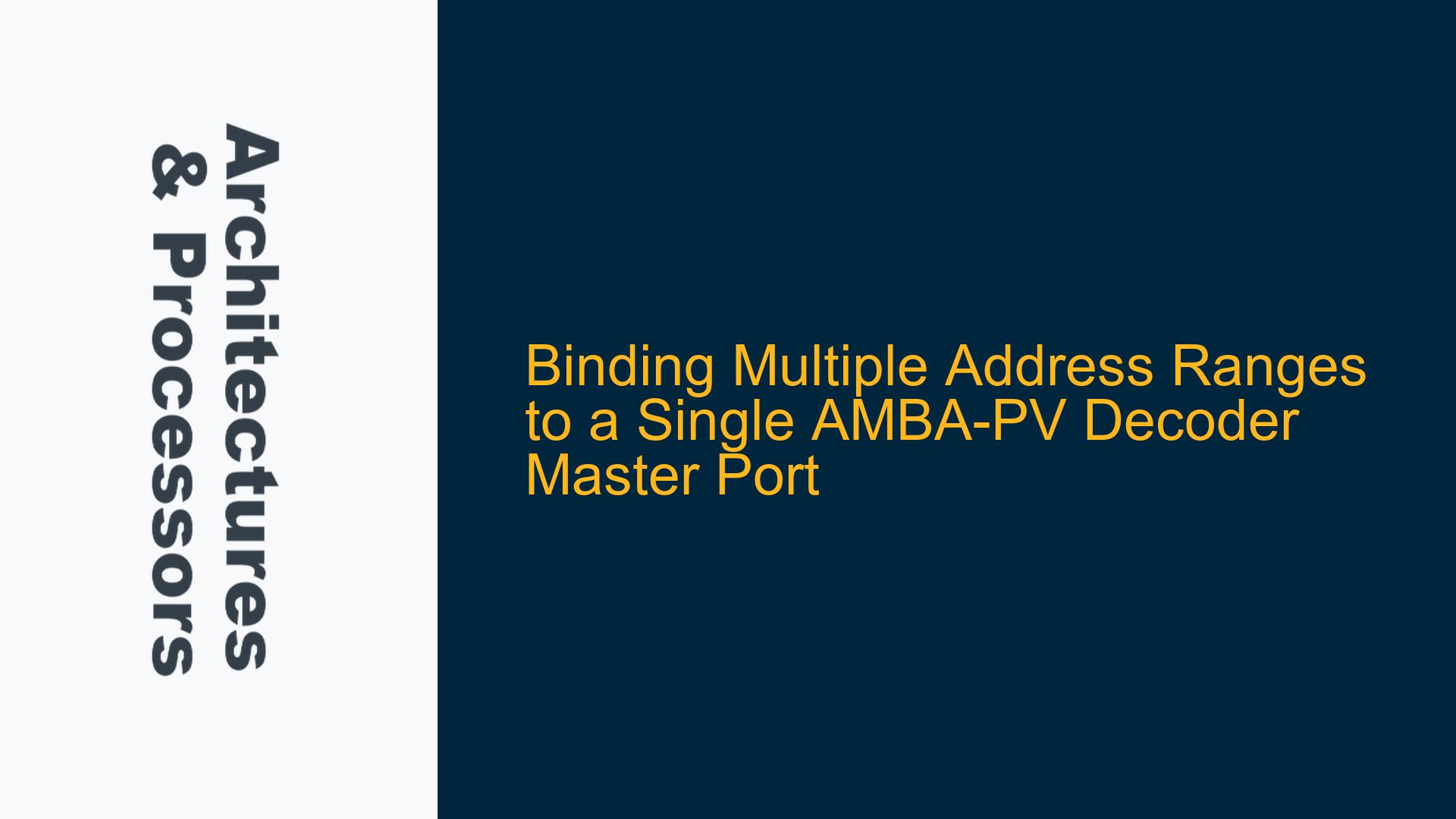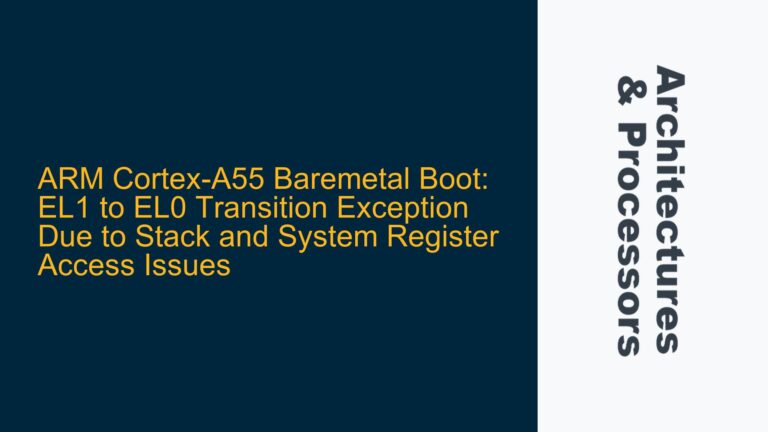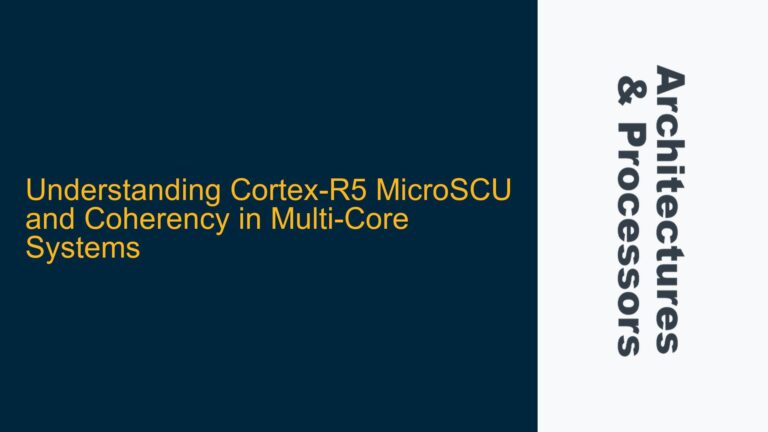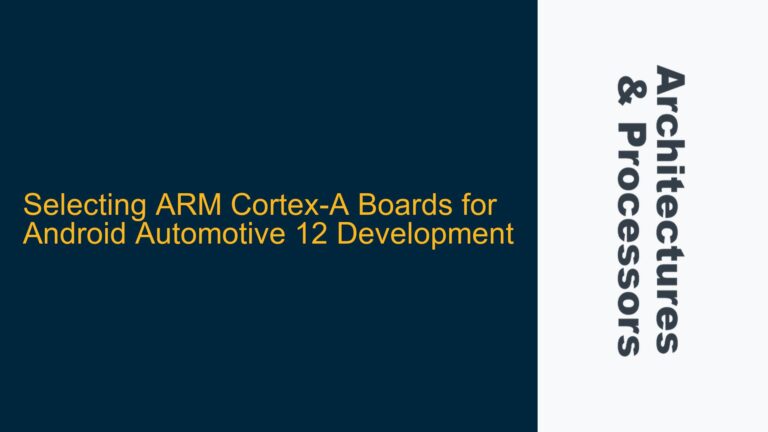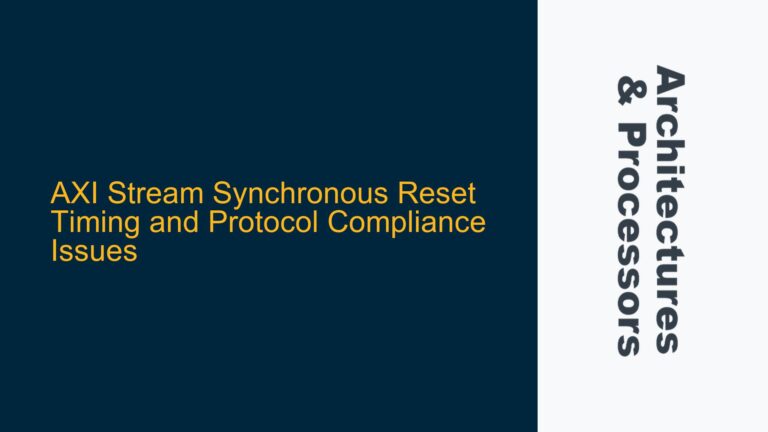AMBA-PV Decoder Configuration for Non-Contiguous Address Ranges
When designing ARM-based SoCs, integrating custom register blocks with non-contiguous address ranges into the AMBA-PV simulation environment can present significant challenges. The core issue arises when a custom register block class, such as Oscar Huang’s home-grown register block, spans multiple address ranges (e.g., [A..B] and [C..D]) but is constrained by having only one AMBA-PV slave port. This limitation complicates the binding process to an AMBA-PV decoder master port, which typically expects a one-to-one mapping between address ranges and slave ports.
The AMBA-PV decoder is a critical component in the Fast Models library, designed to route transactions between master and slave components based on address decoding. However, its default configuration assumes that each slave port corresponds to a single, contiguous address range. This assumption becomes problematic when dealing with custom register blocks that are distributed across multiple non-contiguous address ranges. The inability to bind multiple address ranges to a single AMBA-PV decoder master port can lead to incomplete simulation models, misrouted transactions, and ultimately, verification gaps.
To address this issue, it is essential to understand the underlying architecture of the AMBA-PV decoder and the constraints imposed by the Fast Models library. The AMBA-PV decoder operates by decoding the address of incoming transactions and routing them to the appropriate slave port based on predefined address maps. Each slave port is associated with a specific address range, and the decoder uses this mapping to determine the correct destination for each transaction. When a custom register block spans multiple address ranges, the decoder must be configured to recognize and route transactions to the same slave port for all relevant address ranges.
Limitations of AMBA-PV Decoder in Handling Non-Contiguous Address Ranges
The primary limitation of the AMBA-PV decoder in handling non-contiguous address ranges stems from its design philosophy, which prioritizes simplicity and efficiency in address decoding. The decoder is optimized for scenarios where each slave port corresponds to a single, contiguous address range, as this simplifies the address decoding logic and reduces the complexity of the routing mechanism. However, this optimization comes at the cost of flexibility, making it difficult to accommodate custom register blocks with non-contiguous address ranges.
One possible cause of this limitation is the lack of built-in support for address range aggregation within the AMBA-PV decoder. The decoder does not natively support the concept of associating multiple address ranges with a single slave port, as this would require additional logic to handle the aggregation and routing of transactions across multiple ranges. This limitation is particularly evident when integrating custom register blocks that are distributed across multiple address ranges, as the decoder cannot natively recognize these ranges as belonging to the same slave port.
Another contributing factor is the absence of a standardized mechanism for extending the functionality of the AMBA-PV decoder to support non-contiguous address ranges. While the Fast Models library provides a rich set of components for building simulation models, it does not include a built-in solution for handling non-contiguous address ranges. This lack of extensibility forces designers to implement custom solutions, which can introduce additional complexity and potential sources of error.
Implementing Custom Address Decoding Logic for Non-Contiguous Ranges
To overcome the limitations of the AMBA-PV decoder in handling non-contiguous address ranges, designers can implement custom address decoding logic that extends the functionality of the decoder. This approach involves creating a custom decoder component that can recognize multiple address ranges and route transactions to the appropriate slave port based on a more complex address mapping scheme.
The first step in implementing custom address decoding logic is to define the address ranges for the custom register block. This involves specifying the start and end addresses for each range, as well as any additional attributes that may be required for proper routing. For example, if the custom register block spans the address ranges [A..B] and [C..D], these ranges must be explicitly defined in the custom decoder component.
Next, the custom decoder component must be designed to handle the aggregation of transactions across multiple address ranges. This involves implementing logic that can recognize transactions targeting any of the defined address ranges and route them to the same slave port. The custom decoder component must also handle any potential conflicts or overlaps between address ranges, ensuring that transactions are routed correctly and without ambiguity.
Once the custom decoder component has been implemented, it must be integrated into the simulation model. This involves connecting the custom decoder to the AMBA-PV bus fabric and configuring it to recognize the address ranges for the custom register block. The custom decoder component should be placed between the master components and the custom register block, ensuring that all transactions targeting the custom register block are routed through the custom decoder.
Finally, the custom decoder component must be verified to ensure that it correctly routes transactions to the custom register block. This involves creating a comprehensive testbench that exercises all possible address ranges and transaction types, ensuring that the custom decoder component behaves as expected under all conditions. The testbench should include both functional and performance tests, verifying that the custom decoder component does not introduce any additional latency or other performance issues.
In conclusion, while the AMBA-PV decoder has limitations in handling non-contiguous address ranges, these limitations can be overcome through the implementation of custom address decoding logic. By extending the functionality of the decoder to support multiple address ranges, designers can integrate custom register blocks into their simulation models without compromising on functionality or performance. This approach requires careful design and verification, but it provides a robust solution for handling complex address mapping scenarios in ARM-based SoCs.
